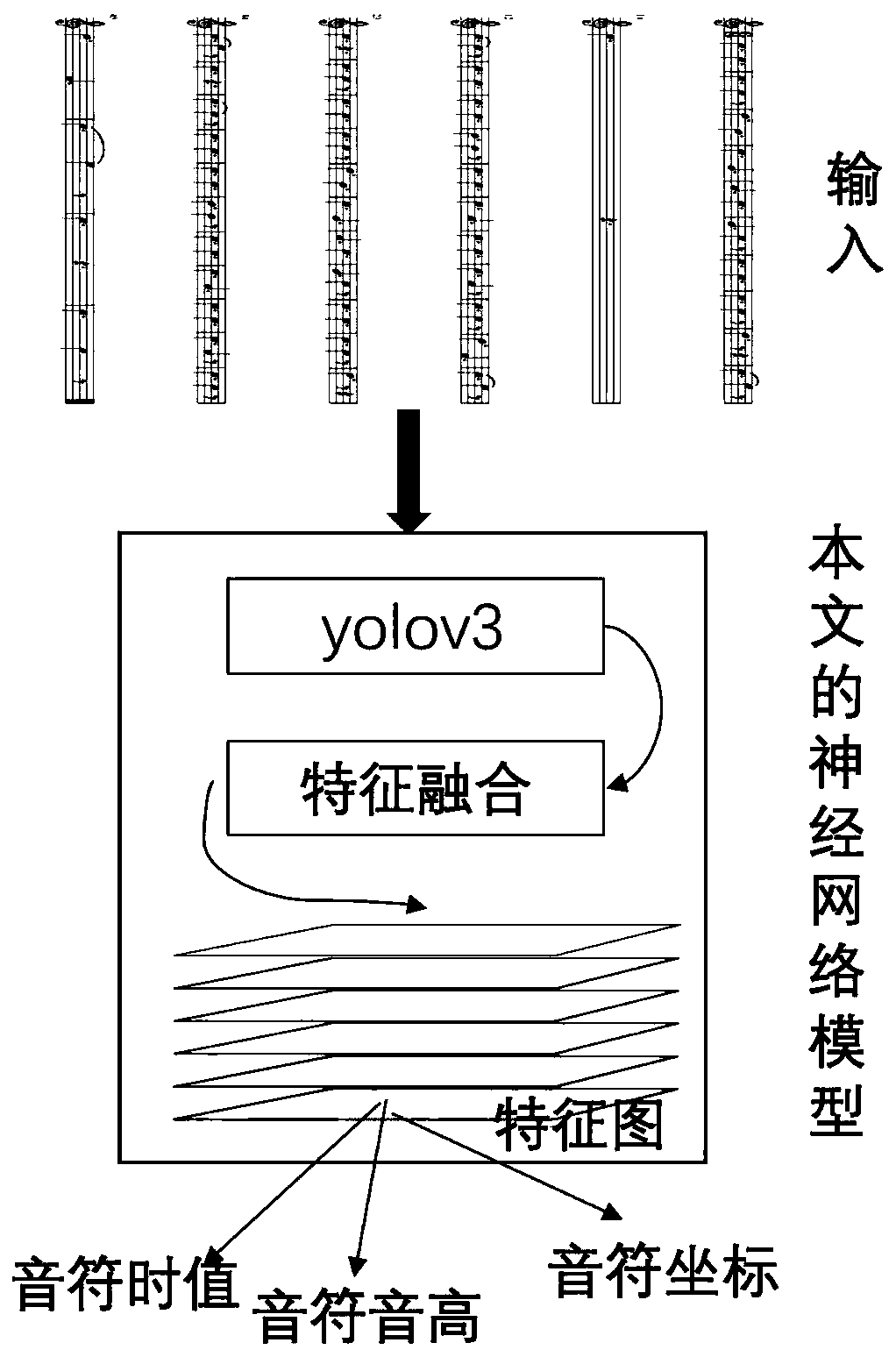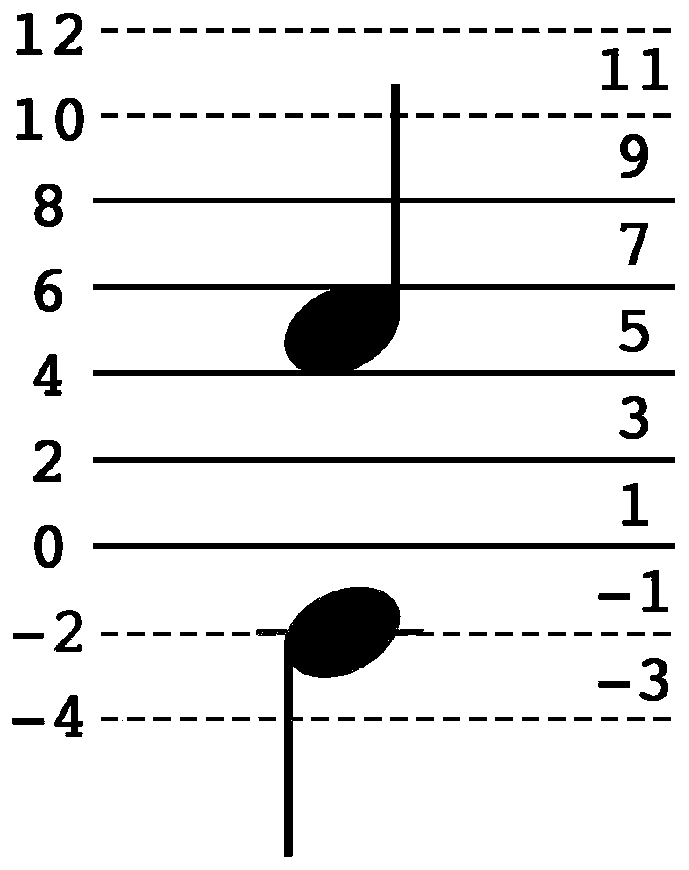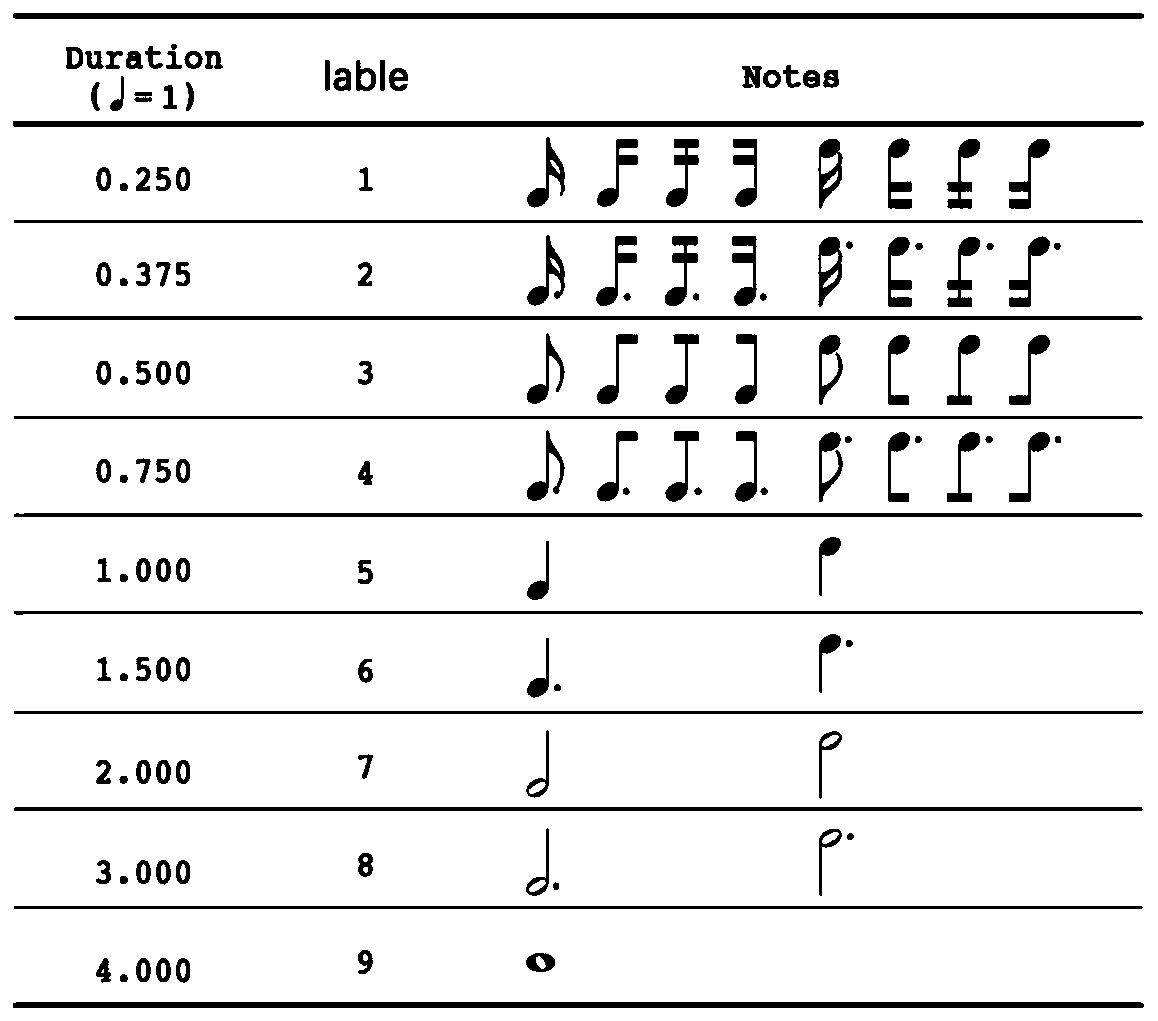End-to-end music score note identification method based on deep learning
A deep learning and recognition method technology, applied in the field of optical score recognition, can solve the problems of unrecognizable note pitch and time value, low recognition accuracy, etc., and achieve the effect of improving generalization ability
- Summary
- Abstract
- Description
- Claims
- Application Information
AI Technical Summary
Problems solved by technology
Method used
Image
Examples
Embodiment Construction
[0028] The corpus of the present invention consists of 10,000 MusicXML files, which are downloaded from the MuseScore dataset, after which a dataset containing musical notation images and corresponding labels is created from the corpus. The whole process is divided into two stages: download MusicXML from MuseScore and convert it into a vector image (svg) file; parse the svg to obtain the bounding box, duration and pitch of the symbol. These data are divided into three distinct subsets. 60% is used for training, 15% for validation and 25% for evaluating the model.
[0029] Data enhancement: For each selected score image, the entire score image is cropped into 4 images a, b, c, and d to amplify the data set, so that the total amount of data is expanded by 4 times. After that, four data enhancement methods including fuzzy, elastic transformation, color transformation and affine transformation are used to process the cropped score image and input to the neural network model.
[...
PUM
 Login to View More
Login to View More Abstract
Description
Claims
Application Information
 Login to View More
Login to View More - R&D
- Intellectual Property
- Life Sciences
- Materials
- Tech Scout
- Unparalleled Data Quality
- Higher Quality Content
- 60% Fewer Hallucinations
Browse by: Latest US Patents, China's latest patents, Technical Efficacy Thesaurus, Application Domain, Technology Topic, Popular Technical Reports.
© 2025 PatSnap. All rights reserved.Legal|Privacy policy|Modern Slavery Act Transparency Statement|Sitemap|About US| Contact US: help@patsnap.com



